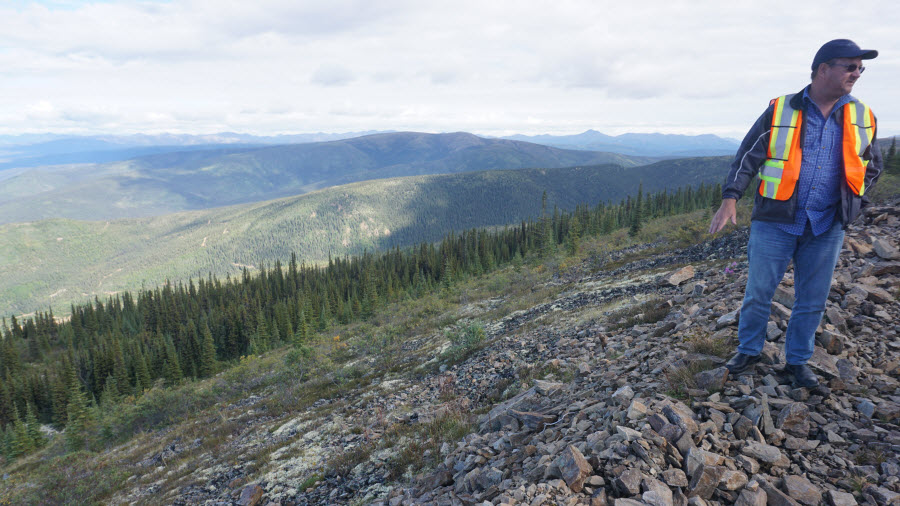
The economics of Victoria Gold’s (VIT) Eagle gold project are set to improve with a new feasibility study in the works by JDS.
We got the details on the scope of new plans at Eagle in a phone interview with Victoria Gold’s President and CEO John McConnell on Thursday.
Two key additions to Eagle — a multi-million ounce gold project in the Yukon — stand out.
First is a plan to consider a run-of-mine (ROM) heap-leach pad that would divert a lot of material currently considered waste.
Victoria Gold is looking at adding a heap-leach pad with a capacity of around 50 million tonnes that could take ore in the 0.4 g/t gold range, McConnell said in an interview Thursday.
In the last feasibility study McConnell noted that about 20mt of rock with grades around 0.4g/t were set to go to the waste pile.
But, if the economics prove worth it, the 0.4 g/t Au material — and other resources not in the last feasibility study — could be pulled into the mine plan and go to the ROM heap-leach pad. That scenario would mirror Kinross’ mining method at the Fort Knox mine in adjacent Alaska, which uses a ROM low-grade heap leach on ore with similar geological characteristics.
Otherwise Victoria Gold aims to crush its higher grade feed to 6.3mm.
The other benefit of bringing the lower-grade material in is that it substantially reduces the strip ratio of the project. Not that it is particularly high at present, but the change stands to drop the strip ratio from about 1.4:1 to under 1:1.
McConnell said the ROM heap leach would, if it proves worth it, likely come online three or so years into production, giving Victoria time to make permit amendments and, hopefully, pay for it from operating cash flow. (Eagle is currently permitted for a single in-valley heap leach pad. The project got its mine permit in December.)
The second key change is the addition of more ~1 g/t Au resources from nearby satellite deposits to Eagle. The new material could boost grade in the mine plan to the 1 g/t Au range for longer in the early years of the mine. (This too would require a permit amendment.)
Of the two new initiatives McConnell said he expected the addition of the second heap-leach pad to have the greater impact on project economics. Further, he noted that JDS was an ideal hire to do the feasibility study as it has designed similar projects for now operating mines, giving it a strong handle on real-world costs of a mining project like Eagle.
In the last feasibility study, by Tetra Tech, Eagle was expected to produce about 212,000 ounces gold a year, on average, and 1.7 million ounces gold LOM. The project is wrapped around 2.3 million ounces gold in reserves, or 92mt @ 0.78 g/t Au. Victoria counts more than double that score in broader resources, albeit at moderately lower grades.
Economics at US$1,200/oz gold yield a $407 million NPV after-tax and a 26% IRR on a mine set to cost about C$400 million to get up and running.
Victoria Gold has about $13 million in cash.
Meantime, McConnell said Victoria Gold continues to keep potential financing partners apprised of the project. The aim is to raise a significant amount of debt, $250m or so, and/or possibly look at alternative financing so long as it doesn’t blow out the company’s share count.
“We’re not under the gun,” he said.
By @kipkeen
Image of CEO John McConnell surveys Victoria Gold Eagle project